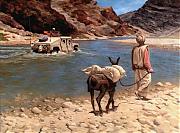
Originally Posted by
tim

Thanks for the feedback on the article. To clarify, the intent of the article was not to imply that raw information is the end all and be all. Additionally, thorough scrutiny and analysis of intelligence will always be necessary.
The problem I sought to highlight is the fact that there is simply no overarching information network collection and sharing for units in Iraq and Afghanistan. The Army is oftentimes accused of fighting the last war, but in essence we are fighting the last battle because we aren't keeping information and properly passing it on to units that will operate in a region 2-3 years from now. Think about how many times we have fought the "battle of Baghdad, Mosul, Falluja, Baqubah, etc..." What is happening, is units redeploy back home and all their information is lost and irretrievable to units who operate in that very same region 6-12 months down the road. This is compounded when units are being shifted continuously. All of that intelligence from the mundane (terrain, trafficability, key terrain, census info) to key data (important sheikhs, imams, cell network) has to all be researched and mapped out again.














Bookmarks